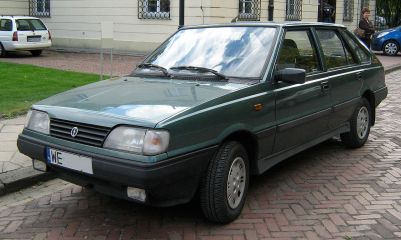Volkswagen, Mitsubishi, Ford…When people think of car manufacturers, they think of Germany, Japan and the USA. Poland is among the last countries that comes to mind. There’s good reasons for this, even though there are such things as Polish cars.
Before I get into those reasons, take a look at some cars Poland has made throughout the years:

Mikrus MR-300
- Produced: 1957-1960 by WSK Mielec
- Engine: 2 stroke, 2 cylinder
- Max. Speed: 90 km/hr (56 mph)
- Fun Fact: Despite striving to be an “affordable” option for the average Pole, at 50,000 zł, most people were not able to afford it.

FSO Warszawa
- Produced: 1951-1973 by Fabryka Samochodów Osobowych
- Engine: 4 stroke, 4 cylinder
- Max. Speed: 105-130 km/hr (65-80 mph)
- Fun Fact: This classic car is making a possible comeback in Poland. Keep reading below to see what I mean.

FSO Syrena
- Produced: 1957-1983 by Fabryka Samochodów Osobowych
- Engine: 2 stroke, 2 cylinder (until 1965); 2 stroke, 3 cylinder (1965-1983)
- Max. Speed: 100-120 km/hr (62-74 mph)
- Fun Fact: “Syrena” means mermaid in Polish and refers to the sea creature who supposedly protects Warsaw and the Wisła River.

Polski Fiat 125P
- Produced: 1967-1991 by Fabryka Samochodów Osobowych.
- Engine: 4 stroke, 4 cylinder
- Max Speed: 140-150 km/hr. (87-93 mph)
- Fun Fact: Since the Polish Fiat was licensed by the Italian car company, it was similar to the Italian version in many ways. One interesting difference, though, was that the Polish Fiat had round headlights, while the Italian Fiat had squares. I guess Poles like circles.

FSO Polonez
- Produced: 1978-2002 by Fabryka Samochodów Osobowych.
- Engine: 4 stroke, 4 cylinder
- Max Speed: 145-155km/hr. (90-96mph)
- Fun Fact: It’s considered one of the worst cars ever made. People complained of its style, the ride, the steering, the noise and the fuel consumption.
Smyk
This car was never mass-produced, as it never made it past the prototype stage. I have included it because it had one very unique feature. The door was on the front of the car, and you could only get into the backseat by first folding down the front seats! I think it’s pretty darn funny. See the video—
For the most part, Poland has not had its own cars since the early 1990s. After the fall of communism in 1991, Poland’s economy was suddenly opened up to the west. Whatever domestic cars it had produced from the 1950s through the 1980s simply could not compete with the new, durable and affordable imports from the outside world.
Since then, Poland’s car market has been relying solely on imports. The high cost of initial investment, coupled with the fact that people prefer to buy established car brands, has prevented the Poles from mass-producing their own new vehicles.
Still, it’s important not to forget that Poland did produce its own cars for decades. Though generally considered inferior in the west, these Polish cars were among the best available among the communist countries of Europe.
Today, many Poles are trying to revive this industry, and some are gradually becoming successful.
One attempt involves the resurrection of the Syrena Sport (the sport car version of the Syrena). Right now, it’s still in the development stage, and the designers are seeking investors for the project.
Another more promising project involves resurrecting the FSO Warszawa vehicle. The “New Warsaw,” designed by Michał Koziołek, is currently a prototype, but could be on the roads within a couple years. The 600 horsepower vehicle would cost around 1.5 million zł ($447,000)!
The New Warsaw is not a car the average Stasiu will be able to afford. Still, at least they got one thing right when designing this car: The doors are on the sides. Not on the front.
